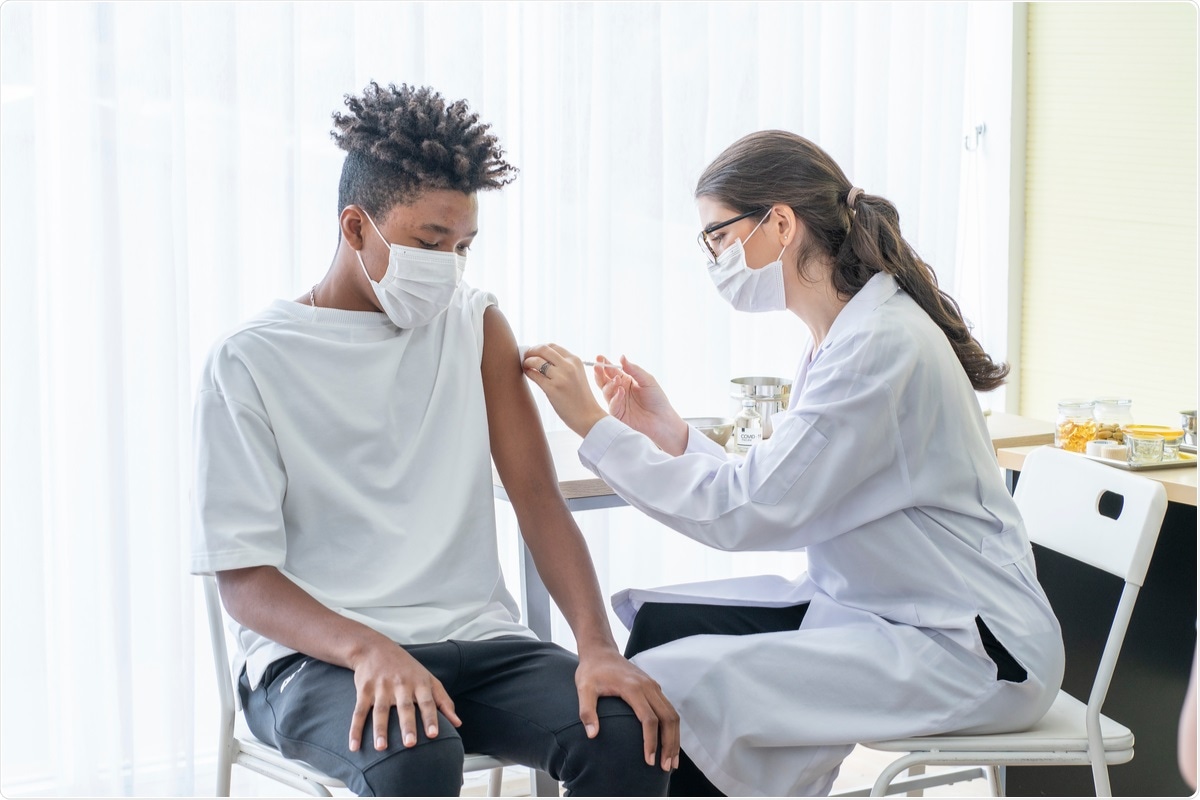Severe acute respiratory syndrome coronavirus 2 (SARS-CoV-2) was detected initially in patients in Wuhan, China, in late 2019. This betacoronavirus is of the same family as two other highly pathogenic coronaviruses: the Middle East respiratory syndrome coronavirus (MERS-CoV) and SARS-CoV.
 Study: Phage-like particle vaccines are highly immunogenic and protect against pathogenic coronavirus infection and disease. Image Credit: Supavadee butradee/ Shutterstock
Study: Phage-like particle vaccines are highly immunogenic and protect against pathogenic coronavirus infection and disease. Image Credit: Supavadee butradee/ Shutterstock
SARS-CoV-2 is the causative virus of coronavirus disease 2019 (COVID-19) global pandemic, which can cause progression to acute respiratory distress syndrome (ARDS) and death. People at the greatest risk of severe consequences associated with COVID-19 are the elderly, the immunocompromised, and those with comorbidities.
Bacteriophage systems have been adapted as therapeutic and diagnostic (theranostic) platforms. For example, phage-like particles obtained from capsid proteins are used as a chemical and genetic modification scaffold. PLPs have been utilized as vaccine platforms to display antigens from pathogens such as Yersinia pestis.
In this study, researchers from the University of Colorado and the University of Maryland report on the development of a monovalent lambda PLP-based vaccine against SARS-CoV-2 (receptor binding domain [RBD] SARS PLP) or MERS-Cov (RBD MERS PLP) through decoration with the spike RBD proteins from either virus. Also, the authors engineered bivalent PLPs, which co-displayed spike RBD proteins to function as bivalent vaccine candidates.
A preprint version of this study, which is yet to undergo peer review, is available on the bioRxiv* server.
The study
To evaluate the immunogenicity of the RBD SARS PLPs, the authors immunized six-week-old BALB/c mice via intramuscular vaccination with 10 µg of wildtype (WT) PLPs as a control or 60% RBD SARS PLPs, which was followed with a booster dose three weeks later. Following a single dose of 60% RBD SARS PLPs, the RBD SARS-specific IgG titers were similar to those seen in patients who had recovered from COVID-19. The mice vaccinated with 60% RBD SARS PLPs were shown to maintain high levels of RBD SARS-specific IgG 174 days post-inoculation, which indicated that these PLPs elicit a durable humoral immune response.
The authors utilized a live virus focus-reduction neutralization test to evaluate if the serum from the immunized mice could neutralize a SARS-CoV-2 infection. There was no neutralizing activity displayed in the mice vaccinated with the WT PLPs. In contrast, serum from the mice vaccinated with 60% RBD SARS PLPs did neutralize a SARS-CoV-2 infection, with the efficiency seen in serum from previously infected individuals. Following a booster vaccination, neutralizing activity was seen to be enhanced 4.7-fold, and high levels of SARS-CoV-2 antibodies were maintained 174 days post initial vaccination.
The protective activity of particles decorated with lambda decoration protein- (gpD) RBD SARS was analyzed using a mouse-adapted SARS-CoV-2 strain (SARS-CoV-2 MA10), which mimics severe human COVID-19. AT 184 days post-vaccination, the mice were challenged with 104 plaque-forming units (PFUs) of SARS-CoV-2 MA10. Rapid weight loss was seen in the mice vaccinated with WT PLPs following infection, whereas the mice immunized with RBD SARS PLPs displayed no weight loss.
The mice were euthanized at four days post-infection to perform histopathology and viral burden analysis. In the lungs of the mice vaccinated with WT PLPs, high levels of infectious virus were detected, whereas, in the lungs of those immunized with 60% RBD SARS PLPs, no infectious virus was detected. Furthermore, in the lungs of the mice vaccinated with 60% RBD SARS PLPs there were greatly reduced levels of genomic and sub-genomic RNA detected when compared to the WT PLP vaccinated mice.
The lung tissue was also analyzed for histopathological changes to assess the effect of immunization with RND SARS PLPs on lung inflammation and disease. The WT PLP vaccinated mice following SARS-CoV-2 MA10 infection had an abundant accumulation of immune cells in perivascular and alveolar locations, vascular congestion, and interstitial edema. In contrast, mice immunized with 60% RBD SARS PLPS displayed a marked reduction of lung-associated histopathological changes, which indicates protection against SARS-CoV-2 induced lung injury and inflammation.
Implications
This study shows that versatile and robust immune responses are elicited via a lambda system, which implies this is a promising vaccine candidate. Following PLP-based immunization, antibodies with neutralizing activities are produced, there is a durable immune response, and effective protection against virulent virus challenge is provided. Future efforts to optimize this type of vaccine platform could expand the diversity of protein-based vaccine technologies available and assist in the prevention of infectious diseases worldwide.
*Important notice
bioRxiv publishes preliminary scientific reports that are not peer-reviewed and, therefore, should not be regarded as conclusive, guide clinical practice/health-related behavior, or treated as established information.
- Davenport, B.J. et al. 2021. Phage-like particle vaccines are highly immunogenic and protect against pathogenic coronavirus infection and disease. bioRxiv. doi: https://doi.org/10.1101/2021.11.08.467648 https://www.biorxiv.org/content/10.1101/2021.11.08.467648v1
Posted in: Medical Science News | Medical Research News | Disease/Infection News
Tags: Acute Respiratory Distress Syndrome, Antibodies, Bacteriophage, Capsid, Coronavirus, Coronavirus Disease COVID-19, Diagnostic, Edema, Genetic, Genomic, Histopathology, Immune Response, Immunization, Infectious Diseases, Inflammation, Lungs, MERS-CoV, Pandemic, Protein, Receptor, Respiratory, RNA, SARS, SARS-CoV-2, Severe Acute Respiratory, Severe Acute Respiratory Syndrome, Syndrome, Vaccine, Vascular, Virus, Weight Loss
.jpg)
Written by
Colin Lightfoot
Colin graduated from the University of Chester with a B.Sc. in Biomedical Science in 2020. Since completing his undergraduate degree, he worked for NHS England as an Associate Practitioner, responsible for testing inpatients for COVID-19 on admission.
Source: Read Full Article